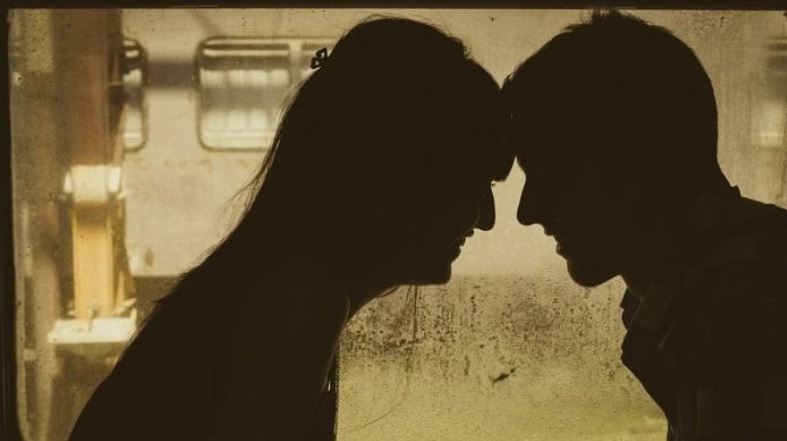Goa is abuzz with excitement as vintage bike and car owners, users, collectors and fans are decking […]

WHOSE SCENITY IS IT ANYWAY? By Monideepa Banerjie
Dec 28- Jan 03 2024, In the News December 27, 2024The recent public display of affection at a Kolkata Metro station – and the police’s refusal to take any action on it – is what could be called, borrowing from Louis Armstrong, a kiss to build a dream on. Images of kissing and more have been consumed by generations of Indians. The writing of the Kamasutra between 400 BCE and 300 CE, and the 10th-century sculptures at Khajuraho are testimony that such acts have been on public display in the country for at least 1,000 years. Today, popular culture and the media have embraced public kissing with abandon. Gone are the days when Indian cinema portrayed romance subtly. Lovers would sink in a blooming field, hidden by two flowers bobbing their heads and touching – fully acknowledging (and approving) the secret acts of pleasure and romance that blossomed behind them.
Even in those scenes, kissing wasn’t depicted as shameful or inappropriate – just hidden conveniently from view. Now, acts of love and affection have moved into public spaces like the Kolkata Metro Rail platform, with the police urging people to “grow up” and refrain from harassing the loving couple. Does this mean – truly mean – we’re taking a step toward openly and willingly accepting PDA in our culture?
Perhaps not, and here’s the challenge.
Take the Valentine’s Day attacks of 2009, when the Right-wing Sri Ram Sena dragged out women from a pub in Mangaluru and publicly thrashed them. Or the anti-Romeo squads of Yogi Adityanath that have been haunting parks across Uttar Pradesh and terrorising young couples loitering there. Things have just been going from bad to worse. From mid-2017, when Yogi came to power for the first time, to July of this year, the anti-Romeo squads have reportedly served 1.26 crore warnings to errant couples. In August, perhaps suspecting they were slipping up, Yogi Adityanath re-launched his anti-Romeo squads afresh.
Love in the time of anti-Romeo squads
An explosive cocktail of religion and politics in today’s India dictates what is or is not obscene, decent or morally lax. The basic objective appears to be controlling who you are, and what you think, wear, drink or eat. These forces are filling a vacuum left by law, which does not take an absolute position on what is obscenity etc but leaves it open to interpretation. Admirable, perhaps, but creates an opportunity for external forces to lay the law instead.
A video shot on the Delhi Metro last year, showing a couple sitting/lying on the floor of a coach and kissing, went viral. Authorities took a dim view of it and asked commuters to conduct themselves responsibly while travelling by Metro. Promising to deploy more flying squads, it urged commuters to report any “objectionable behaviour” to the “nearest available metro staff/CISF so that appropriate action can be taken.”
But there is no clear definition of “objectionable behaviour”, not in Section 294 of the Indian Penal Code. Section 296 of the Bharatiya Nyaya Sanhita, the new official criminal code in India that replaces the IPC, deals with obscenity and its various manifestations in society, which could be words, songs or acts in public spaces that may be sexually explicit or offensive, cause annoyance to others or go against the prevailing standards of decency and morality.
But prevailing standards is the trick phrase. Determined by a community’s history, geography and evolution over time, these standards are not absolute. And therein lies the rub. Whose obscenity is it anyway?
Kiss away outdated morality
Fortunately, one person’s obscenity is another’s freedom of expression. Remember a time when women emerging from behind the purdah was obscene, as also women wearing trousers and jeans? Even a saree whose pallu left one breast undraped was looked down upon. Yes, these milestones in the definition of obscenity have been crossed over the years. Now, it’s time we crossed the milestone of PDA and kissed away outdated morality.
Look, this issue could be dissected into layers and layers. What’s the fine line between PDA kissing and PDA intercourse? Can sexual harassment of a woman be labelled PDA by her partner, and what about PDA by sexual minorities? Today, if same-sex partners hold hands on the street or book a room in a hotel, chances are no one will raise eyebrows. But tomorrow? In this, Kolkata needs to smarten up. A recent study published in the BMC Public Health Journal surveyed 300 gay men across six metros, finding that Kolkata had the highest instances of gay people being abused, harassed and inflicted with violence. Not something to be proud of.
But the Kolkata Metro kissing couple, and the subsequent police admonition to a nitpicking public could be the beginning of new things. One lives in the hope. Meanwhile, wonder what happened to that young couple. Did they continue to kiss obliviously or slide away embarrassed? Or did they hop on to the next train and ride proudly into the proverbial sunset? The last, I hope. Truly time to grow up.
Monideepa Banerjie is a senior journalist based in Kolkata. She tweets @Monideepa62. Views are personal.
(Edited by Zoya Bhatti)
(Courtesy The print )















